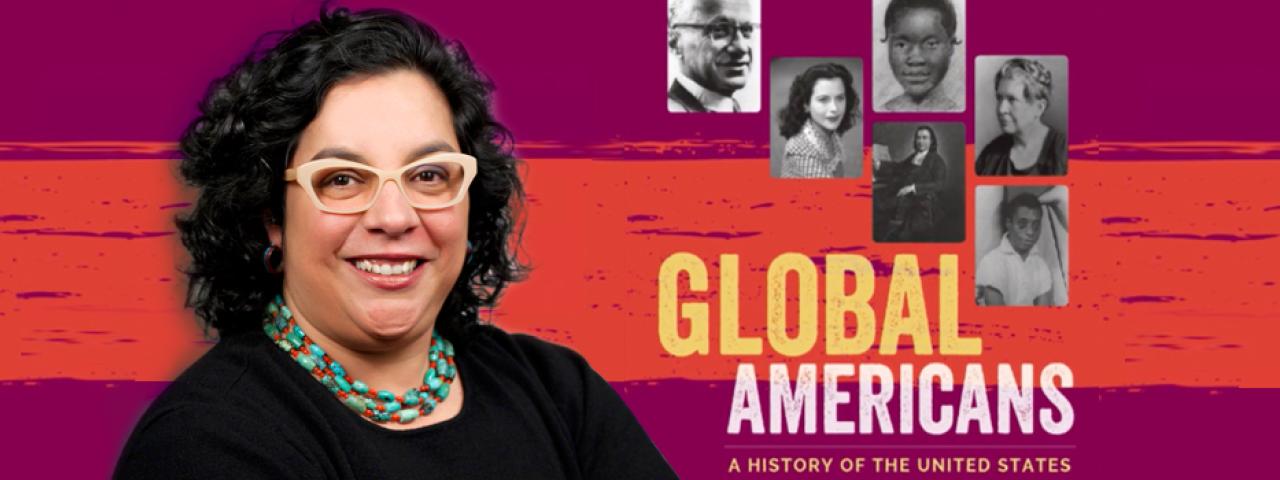
Maria E. Montoya has been NYU Shanghai’s new Dean of Arts and Sciences since June. As a tenured member of NYU's history faculty for almost a decade, Montoya also knows NYU Shanghai well, after teaching at the campus as an affiliated professor during the 2014-15 academic year. Author of forthcoming U.S. history textbook, Global Americans: A History of the United States, Montoya is also an expert on the development of the American West, and the history of workers, women and ethnic minorities.
We sat down with the new dean and talked challenges of the Arts and Sciences, what a Global American looks like, and why it’s important for students to have a global perspective.
Q: What impact do you want to make as NYU Shanghai’s new dean for the Arts and Sciences?
A creative impact. Things are much more flexible here in the way that we think about classes and the way we think about majors and areas of concentration. It’s exciting to be at a place like this--a hybrid of an American university, and I think a lot about how students are interacting academically in the classroom.
The challenge is getting a handle on some of the fields I’m not as familiar with, but it’s a rewarding process. There are a lot of moving parts in this place--so just figuring out how everything works together part of the exciting challenge.
Q: What is unique about NYU Shanghai’s Arts and Sciences program?
The most unique thing is its diversity in the classroom. You’re able to have these cross-cultural conversations that you could never really have in a U.S.-based classroom. Things that you take for granted in a U.S. classroom you just can’t take for granted here. Those who teach here and choose to be a student here agree to engage in figuring out what it means to live in this place now and for the future. The classroom is peppered with so many different perspectives. It’s an amazing thing to watch how students broaden their own views. “Oh that’s interesting,” they’ll say. “ I never saw it that way. I’ve only learned about it in this particular way.”
Q: You recently authored the textbook Global Americans and are an expert in the history of the American West and labor and Latina/o history. Did that help you bring a global perspective to the curriculum here?
Doing the Global Americans textbook really helped. U.S. history has always tended to be very focused inward. The project took us about 10 years to write, think about and put all together. When you think about American history from a global perspective, when you think about all the people who come to America and how Americans themselves are out and about since the 15 century, it just reshapes the way you see and think about presenting American history.
One thing the textbook does differently is that it’s entire first chapter has no Europeans in it. It’s all about native peoples and it takes seriously the notion that North Americans were the native people, and they had really complex societies and complex trade relationships--a whole world existing before European contact. You don’t assume that 1776 is going to come and the nation will emerge, but in fact this was a contest of empires and a contest of cultures. If you just switch the perspective a little bit, it becomes a really complex, interesting story. It’s not just about Thanksgiving. It really looks at all of North America and not just the East Coast.
Q: Why is it important for students today to have a global perspective of history?
Everybody lives in a global world whether they know it or not. Think about the U.S. politics right now-- it’s so much about politics of fear and politics of the unknown. Through the book I want to show students ‘You know what, America has always been globally connected, whether you believe that or not.’ Look back to the 15 and 16 century--there were always these connections, these trade networks, there were people migrating. People have always had to reassess and reevaluate with each other--and somewhere we got really afraid of that, but that’s actually what the U.S. is built on, different peoples in constant interaction with each other. Of course that doesn’t mean it’s always easy or painless and in fact it can be really violent and difficult, but as a nation you get through that. You figure out how to absorb the next group of people, whether they are Mexicans or Asians, all of these different groups of people have their own stake of what it means to be an American.

